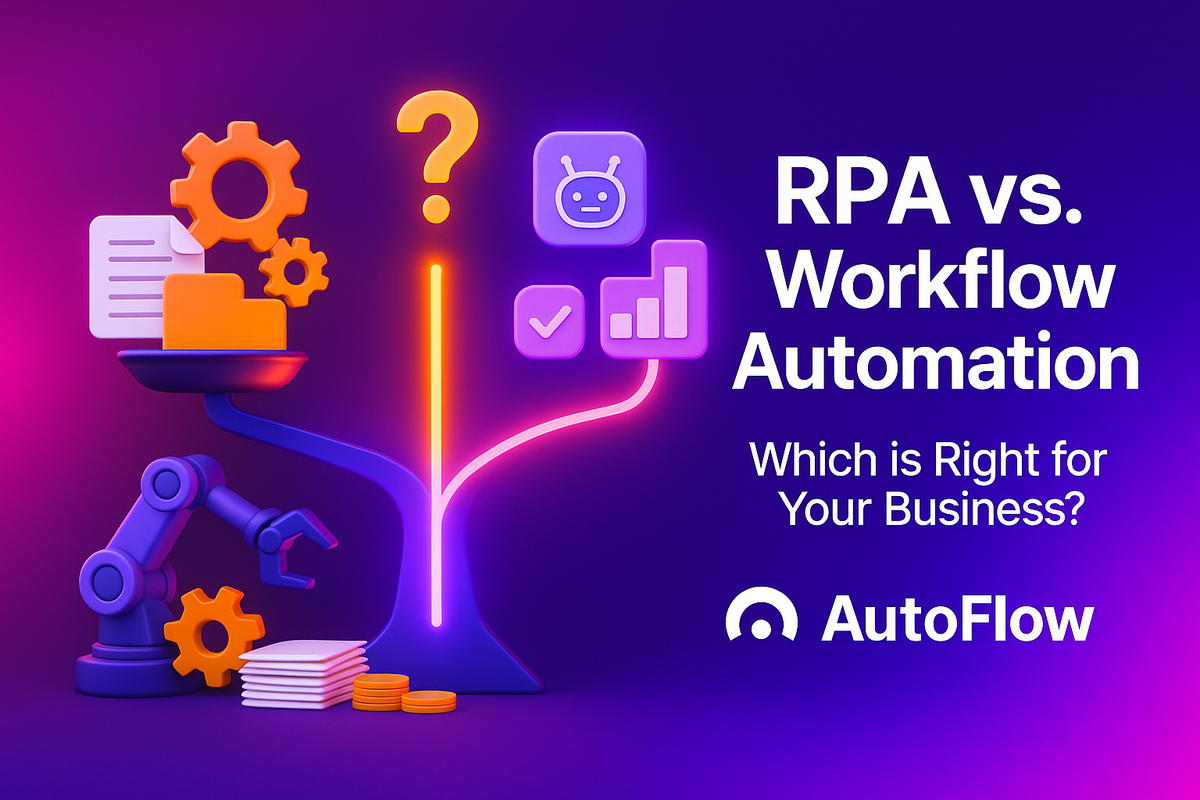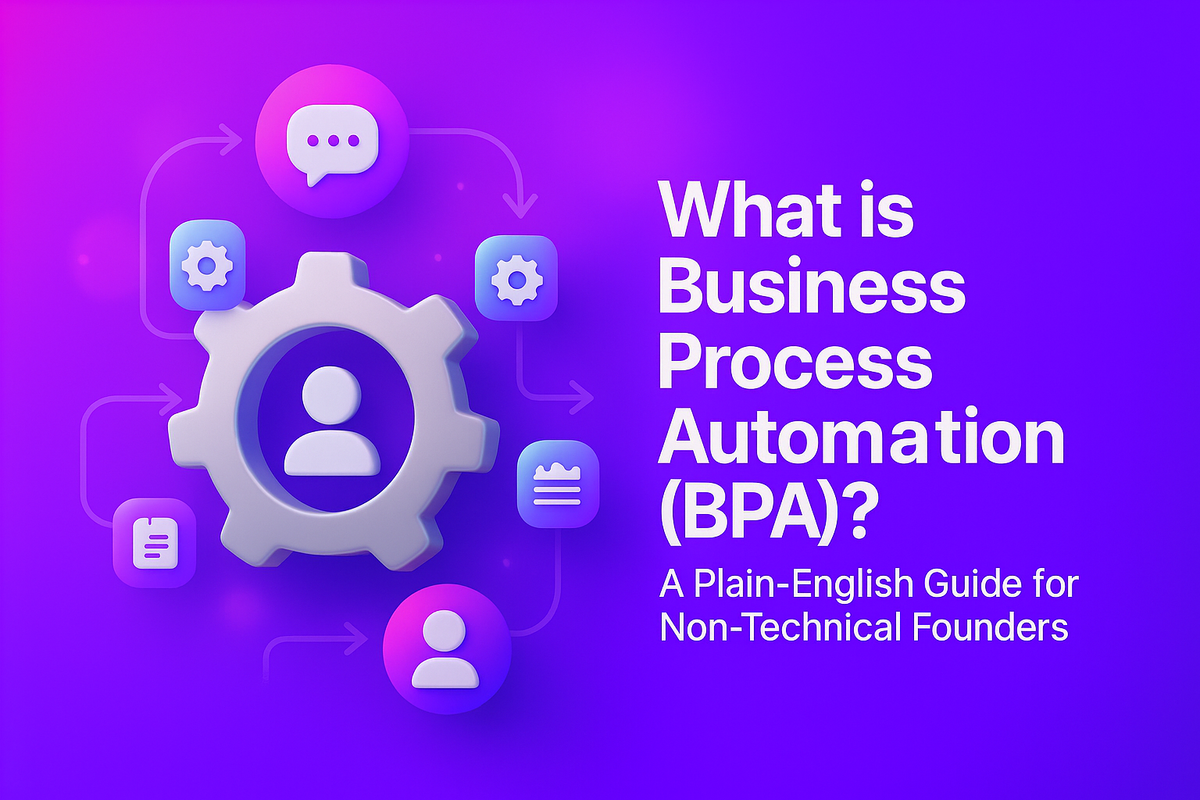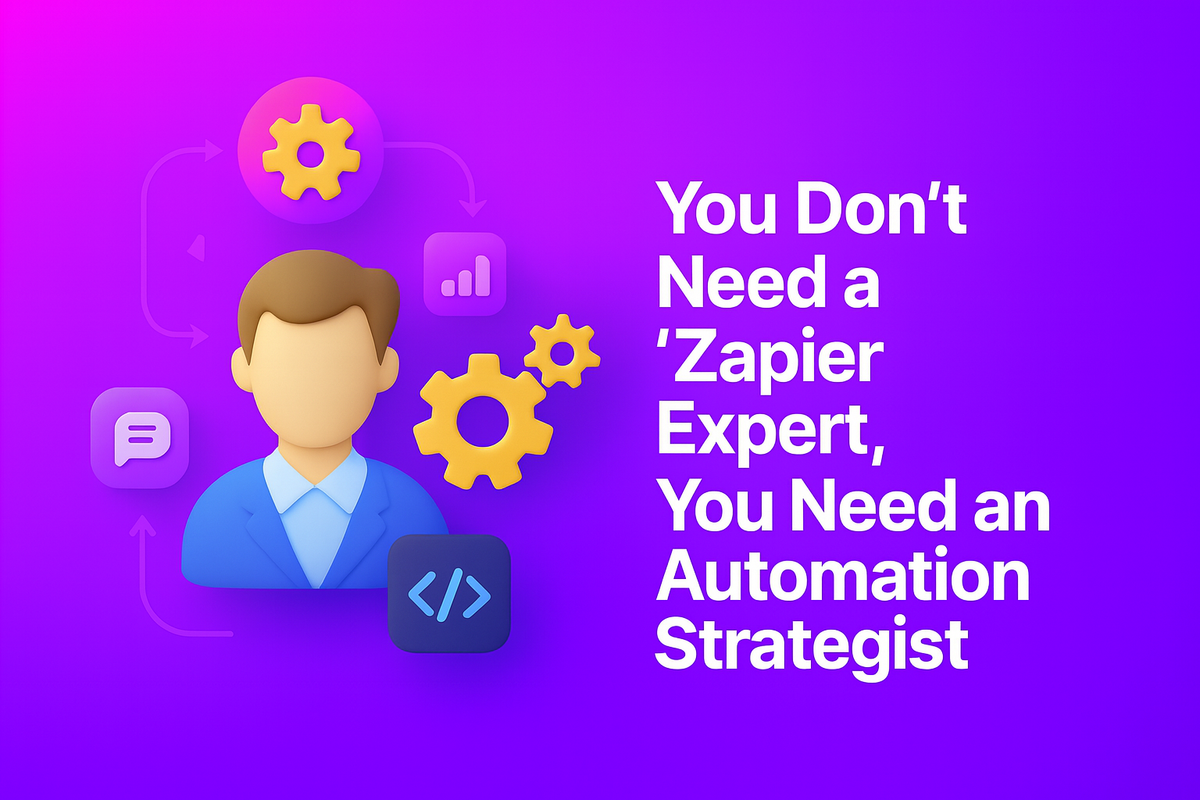
In the ongoing drive for greater efficiency and scalability, Dutch SMEs are increasingly turning to automation. As you explore your options, you'll inevitably encounter two key terms: Business Process Automation (BPA) and Workflow Automation. They are often used interchangeably, creating confusion about what they are, how they differ, and which approach is the right fit for your specific business challenges.
Are they just two sides of the same coin? Does the distinction even matter for a growing business?
The answer is a definitive yes. While both aim to improve efficiency, they operate at different scales and solve different types of problems. Understanding the difference is crucial. Choosing the right approach means unlocking targeted, high-impact results, while a mismatch can lead to incomplete solutions or overly complex projects that fail to deliver the expected ROI.
🚆 The Transportation Analogy
To clarify the distinction, let's use an analogy. Think of your business operations as a city's transportation network.
Workflow Automation is like a dedicated, efficient train line. Its purpose is specific and linear: to move passengers (data or a task) from Station A to Station B to Station C along a predefined route. It's excellent at its specific job, highly reliable, and relatively simple to implement.
Business Process Automation (BPA), on the other hand, is the entire integrated city transportation system. It includes the train line (the workflow), but also the bus network, the traffic light synchronization, the real-time GPS tracking on all vehicles, and the central control tower that analyzes traffic flow to optimize the entire system. BPA is a holistic, strategic approach to managing how everything moves within the entire city, not just along one track.
This article will break down these two powerful concepts, explore their practical applications for SMEs, and provide a clear framework to help you decide which is right for your business.
Unpacking Workflow Automation: The Power of the Predictable Path
Workflow automation is the simpler and more common of the two concepts. At its core, it is the automation of a linear, sequential series of tasks that make up a single, specific part of a larger process. It's about taking a repetitive, rule-based procedure and making it happen automatically, often by connecting different software applications.
Think of it as creating a digital domino rally. When the first domino (the trigger) is pushed, a predictable sequence of events follows automatically. The focus is on the task and the smooth handoff from one step to the next.
🔧 Key Characteristics of Workflow Automation
- Task-Focused: Its primary goal is to complete a specific, well-defined task, such as approving an expense report or onboarding a new client.
- Sequential & Linear: It follows a clear, step-by-step path: If X happens, then do Y, then do Z.
- Human-Centric: It often involves "human-in-the-loop" steps, where the automation pauses for a person to provide input or approval before continuing.
- Simple, Rule-Based Logic: The decisions within the workflow are typically based on simple "if/then" logic.
- Dominated by No-Code/Low-Code Tools: It is often implemented using user-friendly platforms that require minimal coding knowledge, making it highly accessible for SMEs.
Practical Examples for SMEs in the Netherlands
📧 Marketing Lead Nurturing
Trigger: A potential customer fills out a contact form on your website.
Workflow:
- The contact is automatically created in your CRM (e.g., HubSpot, Pipedrive).
- They are added to a "New Leads" list.
- An instant confirmation email is sent.
- A task is created for a sales representative to follow up in two days.
- A series of pre-written informational emails are sent over the next two weeks.
👥 HR Employee Onboarding
Trigger: A candidate signs their employment contract via DocuSign.
Workflow:
- An IT ticket is automatically generated to create their email and system accounts.
- A notification is sent to the office manager to prepare their desk and equipment.
- The new employee is automatically enrolled in the company's HR system (like Personio or Nmbrs).
- A welcome email is scheduled to be sent on their first day.
💰 Finance Invoice Approval
Trigger: A team member submits an invoice to a specific email address.
Workflow:
- The invoice attachment is saved to a specific Google Drive or SharePoint folder.
- A notification with an approval link is sent to their manager via Slack or Microsoft Teams.
- If the manager clicks "Approve," the workflow forwards the invoice to the accounting department's email.
Popular Tools: Platforms like Zapier, Make.com (formerly Integromat), HubSpot Workflows, and Microsoft Power Automate are the champions of workflow automation. They excel at connecting cloud-based applications through APIs to automate these linear tasks.
Understanding Business Process Automation (BPA): The Strategic, Holistic Approach
Business Process Automation (BPA) is a much broader and more strategic discipline. It doesn't just focus on a single task; it aims to automate an entire business process from end-to-end, often spanning multiple departments, systems, and data sources.
BPA is a key pillar of digital transformation. It involves a fundamental rethinking of how a core business function operates, with the goal of making it more efficient, resilient, and intelligent. It integrates various technologies, including workflow automation, to create a single, cohesive system that manages the entire process with minimal human intervention.
🏗️ Key Characteristics of Business Process Automation
- Process-Focused: Its goal is to optimize an entire business function, like "procure-to-pay" or "order-to-cash."
- Holistic & Integrated: It connects multiple systems, including legacy software, databases, cloud apps, and even physical documents, into one seamless operation.
- System-Centric: While humans are still involved, the primary goal is to let systems do the heavy lifting and data management.
- Complex Logic & Intelligence: BPA often incorporates more advanced technology like Robotic Process Automation (RPA) to mimic human actions on digital systems, Artificial Intelligence (AI) for decision-making, and Optical Character Recognition (OCR) to read documents.
- Drives Digital Transformation: The goal isn't just to speed up an old process but to create a new, fundamentally better, and more scalable digital process.
Practical Examples for SMEs in the Netherlands
💼 Finance (The "Procure-to-Pay" Process)
Trigger: A supplier emails an invoice in PDF format.
BPA System:
- An RPA bot constantly monitors the inbox, downloads the PDF invoice, and uses OCR/IDP (Intelligent Document Processing) to read and extract key data (invoice number, amount, supplier name, line items).
- The extracted data is automatically validated against a purchase order in your ERP system (e.g., Exact Online, AFAS, or SAP Business One).
- If a match is found and is below €1,000, the system automatically approves the invoice and schedules it for payment in the accounting software.
- If there is a discrepancy or the amount is over €1,000, it triggers a human-centric approval workflow (a component of the larger BPA), sending a notification to the relevant manager.
- Once paid, the system archives the invoice and updates the financial records automatically.
🛒 Operations (The "Order-to-Cash" Process)
Trigger: A customer places an order on your e-commerce platform (e.g., Shopify, Magento).
BPA System:
- The order is received and the system instantly checks real-time inventory levels in your Warehouse Management System (WMS).
- Stock is automatically allocated, and a picking order is sent to a warehouse employee's handheld scanner.
- Once the item is scanned as "picked," the system connects to a carrier's API (e.g., PostNL, DHL) to generate a shipping label and schedule a pickup.
- The customer's record in the CRM is updated with the tracking number, and a shipping confirmation email (a workflow) is triggered.
- The sale is automatically recorded in your accounting system.
Side-by-Side: Key Differences at a Glance
📊 Comparison Table
| Feature | Workflow Automation | Business Process Automation (BPA) |
|---|---|---|
| Scope | A single task or a series of linear tasks. (e.g., Approve a document) | An entire end-to-end business process. (e.g., Manage the entire supply chain) |
| Goal | Task efficiency. Improve the speed and reliability of a specific, narrow procedure. | Process transformation. Fundamentally redesign a core business function for maximum efficiency and scalability. |
| Complexity | Simple. Typically linear with basic "if/then" rules. | Complex. Involves multiple systems, conditional logic, parallel processes, and exception handling. |
| Integration | Connects a few applications, usually modern cloud apps via API. | Deeply integrates many systems, including databases, ERPs, legacy software, and external portals. |
| Key Technology | No-code/low-code platforms like Zapier, Make.com. | A suite of technologies, including RPA, AI, OCR, and workflow tools, managed by a central platform. |
| Analogy | A dedicated train line. | The entire city's transportation system. |
It's important to see that BPA is not a competitor to workflow automation; it is an evolution of it. A robust BPA system will almost always contain multiple, smaller workflow automations as essential components.
Which is Right for Your Dutch SME?
The choice between workflow automation and BPA depends entirely on the problem you're trying to solve. Here's a simple framework to guide your decision:
✅ You need Workflow Automation if...
- You are just starting your automation journey and want to target quick wins.
- Your bottlenecks are specific and isolated (e.g., "It takes too long to notify sales of a new lead").
- You primarily use modern, cloud-based software (SaaS) with available APIs.
- Your goal is to eliminate manual data entry between two or three applications.
- You want to empower non-technical team members to build their own simple automations.
🏆 You should consider Business Process Automation (BPA) if...
- You need to overhaul a complex, core business function that is holding back company growth.
- Your process involves a mix of modern and legacy systems, databases, or even paper documents.
- The process has complex decision-making, requires data validation from multiple sources, and needs sophisticated error handling.
- Your goal is a company-wide digital transformation to build a scalable foundation for the future.
- You're looking for a strategic, long-term solution that provides deep insights and analytics into process performance.
Conclusion: From Solving Tasks to Transforming Your Business
The distinction is clear: Workflow Automation solves tasks; Business Process Automation transforms processes.
For many Dutch SMEs, the journey begins with workflow automation. By identifying the most repetitive, time-consuming tasks and implementing simple workflows, you can achieve immediate ROI and build a culture of efficiency. These quick wins create the momentum and breathing room needed to tackle larger challenges.
As your business grows and your needs become more complex, you can then look to a broader BPA strategy to connect these automated islands into a seamless, intelligent, and powerful operational backbone. The choice isn't about which is "better," but about applying the right tool for the job at the right time.
🤔 Ready to Identify Your Automation Opportunities?
Unsure where your biggest automation opportunities lie? A great first step is a process audit. Contact us today for a free consultation. We'll help you map your current processes and identify the highest-impact areas for automation, whether that's a simple workflow or a more comprehensive BPA strategy.


